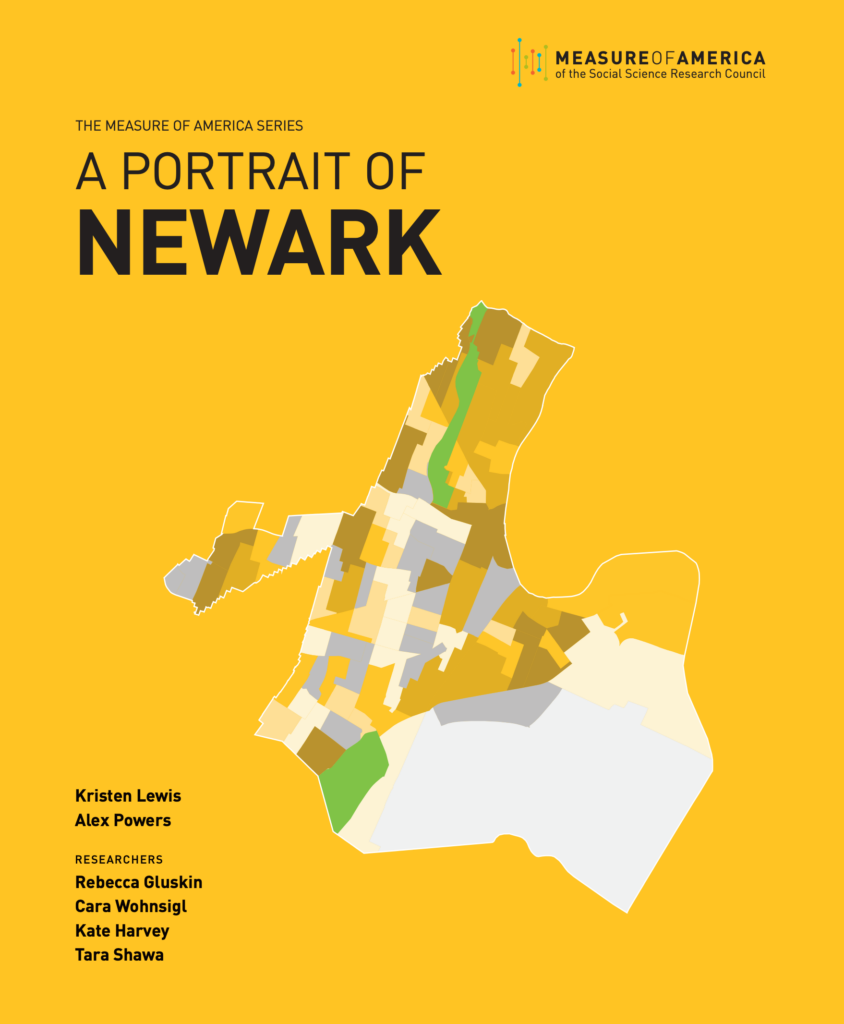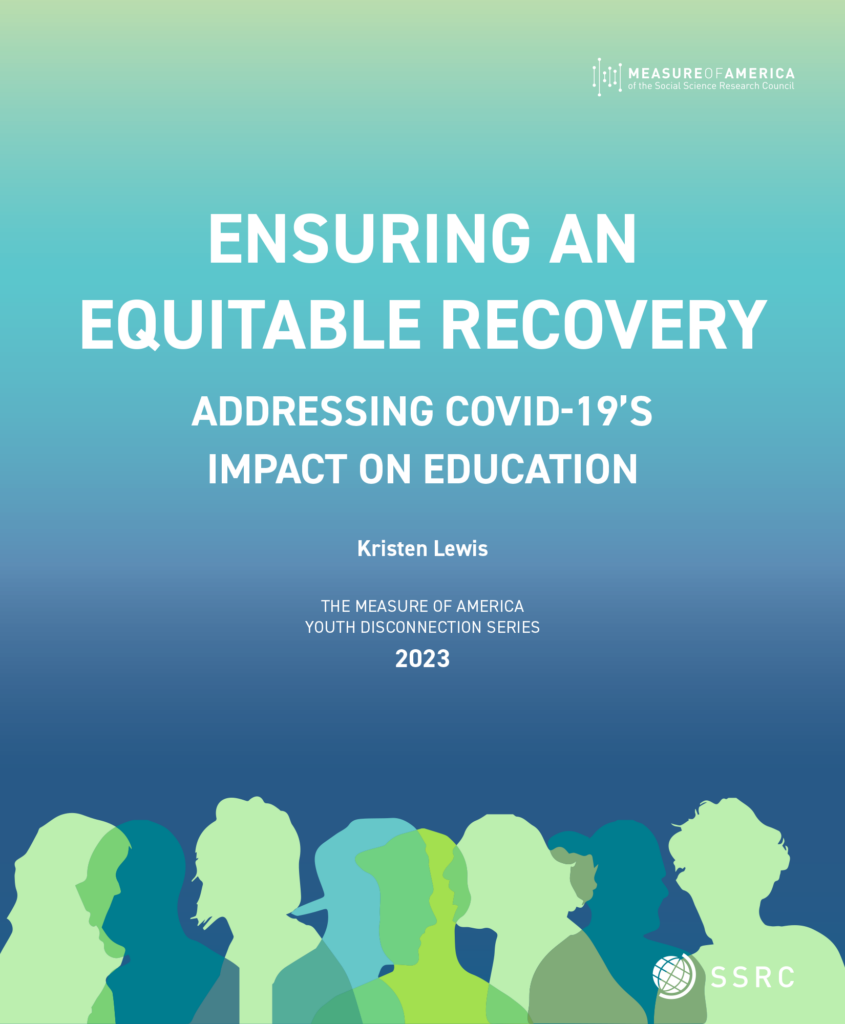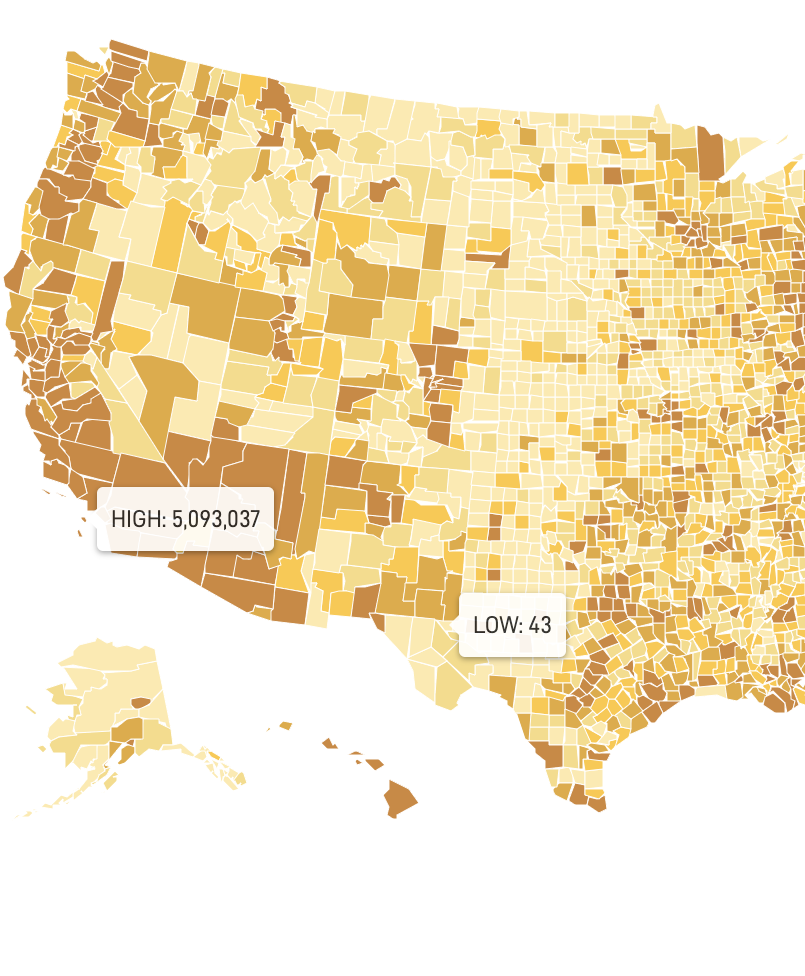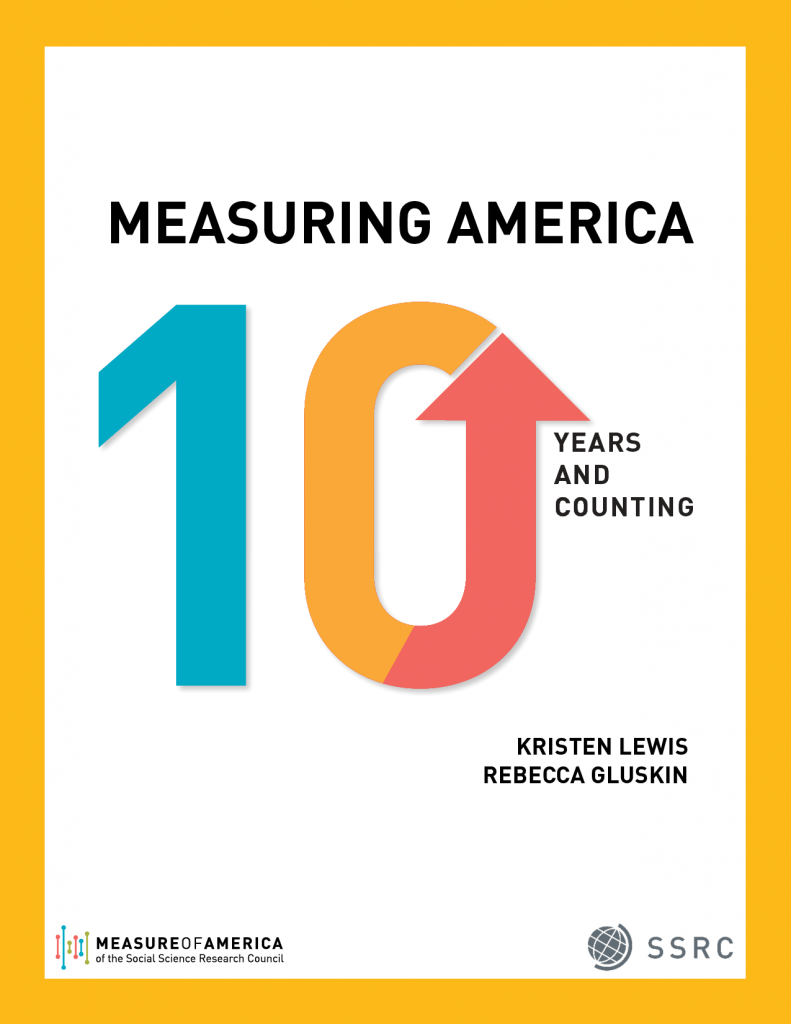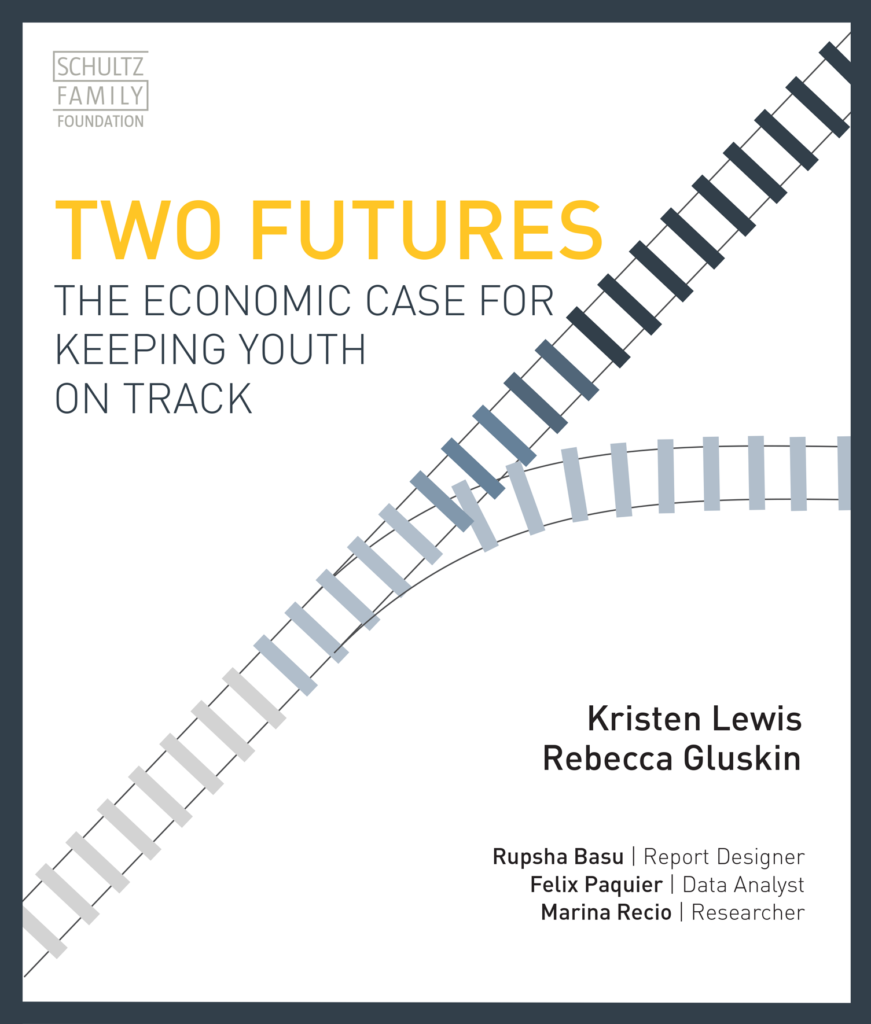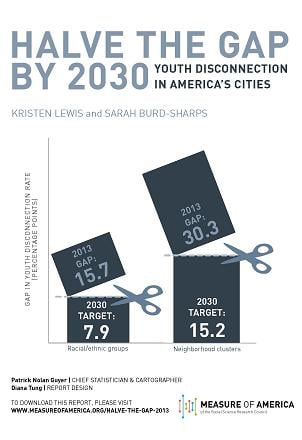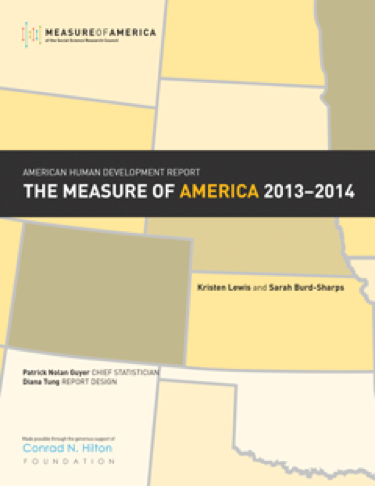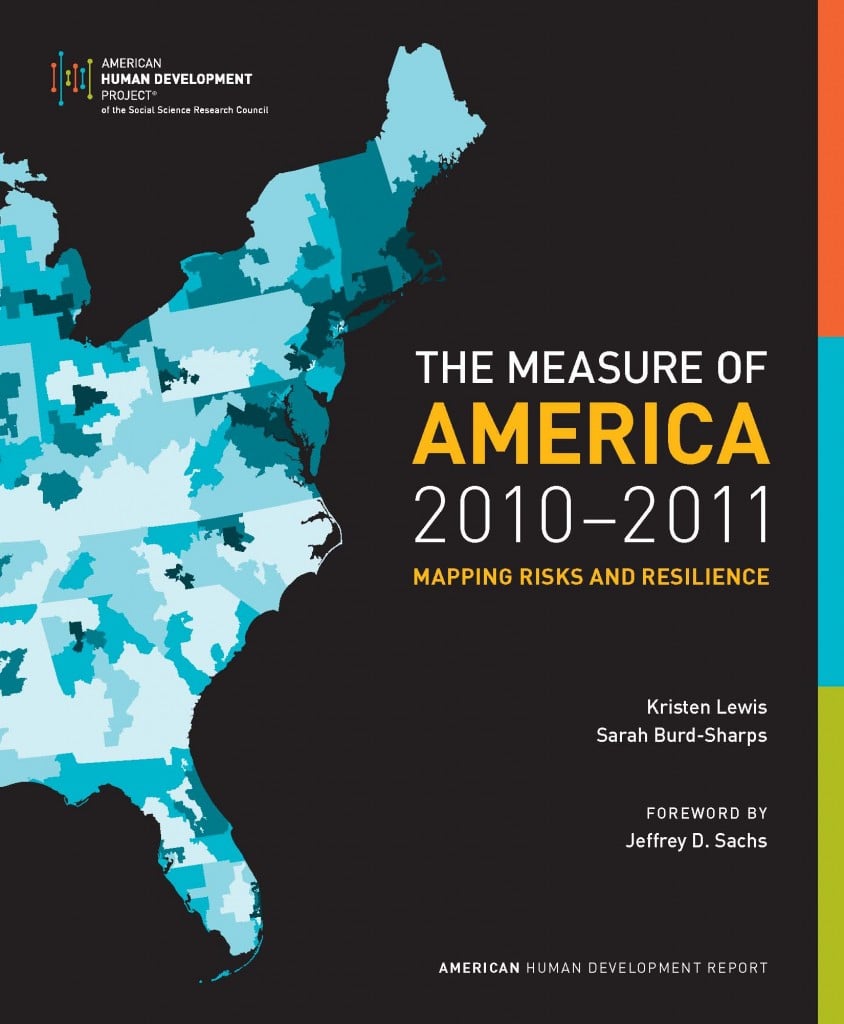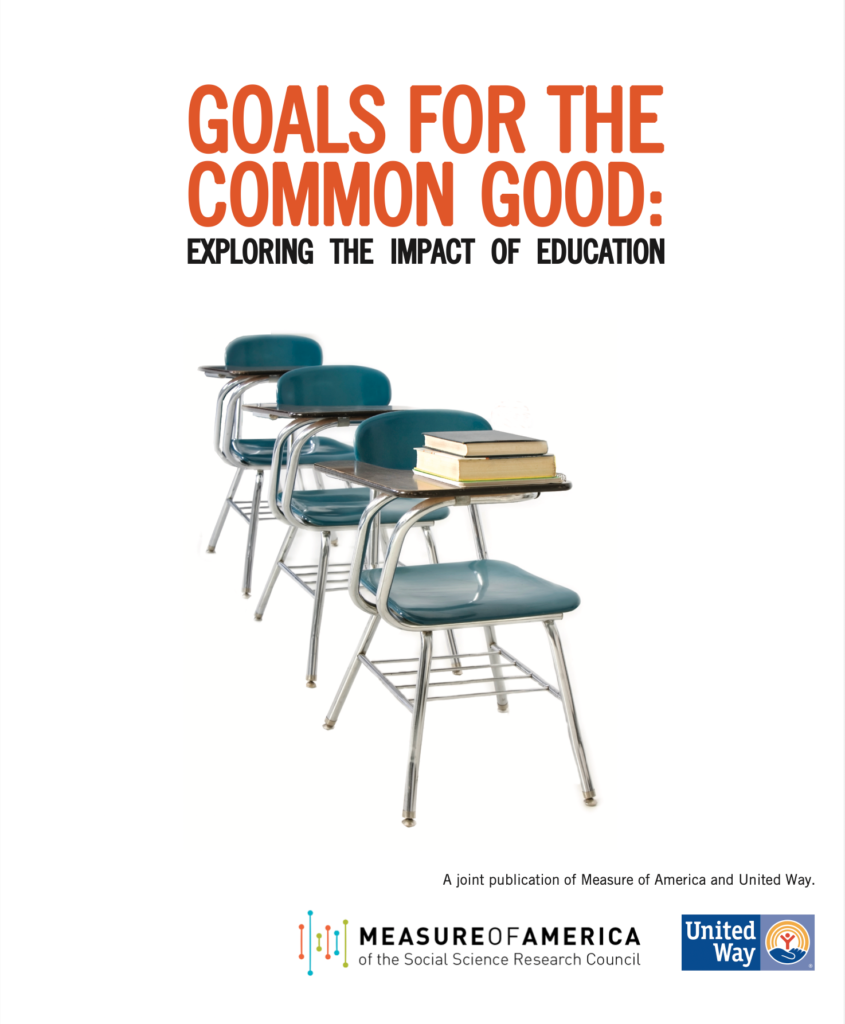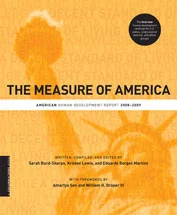Our Work
A Portrait of Newark
Report | April 24, 2024A Portrait of Newark is an extensive study of well-being across race, place, and gender, and youth disconnection across Newark, New Jersey.
Ensuring an Equitable Recovery: Addressing Covid-19’s Impact on Education
Report | October 3, 2023Ensuring an Equitable Recovery presents 2021 youth disconnection rates for the United States as a whole as well as by gender, race and ethnicity, region, state, metro area, and congressional district.
Mapping America Tool
Data Tool | June 17, 2021With over 100 indicators, Mapping America allows users to explore data like they never have before. Users can plug in their zip codes to locate human development levels within their own communities, compare places and indicators, and more.
Measuring America: 10 Years and Counting
Report | December 14, 2018“Measuring America: 10 Years and Counting” explores trends in American Human Development Index scores over the past decade by race and ethnicity, gender, and U.S. state, revealing the uneven nature of America’s rebound from the 2007 financial crisis.
Two Futures: The Economic Case for Keeping Youth on Track
Report | October 9, 2018Building on Measure of America’s Disconnected Youth Series, Two Futures: The Economic Case for Keeping Youth on Track finds that by the time they reach their thirties, those who had been working or in school as teens and young adults earn $31,000 more per year.
Geographies of Opportunity
Report | April 22, 2015Geographies of Opportunity: Ranking Well-Being by Congressional District is an in-depth look at how residents of America's 436 congressional districts are faring in three fundamental areas of life: health, access to knowledge, and living standards.
Historical Report of Opportunity
Report | June 24, 2014“Historical Report of Opportunity,” the first statistical measure of national and state opportunity levels over the past four decades, uses publicly available data to provide a holistic picture of how the climate for opportunity has changed in all 50 states and Washington, D.C.
HALVE THE GAP BY 2030: Youth Disconnection in America’s Cities
Report | October 24, 2013In this report we imagine, in very specific terms, a different, better tomorrow. We lay out an ambitious but attainable goal: to halve the gaps between the most- and least-connected neighborhoods and between racial groups in half by 2030.
The Measure of America 2013–2014
Report | June 19, 2013This third volume in the Measure of America series measures well-being in three vital areas—health, education, and earnings—that shape the opportunities available to us and enable people to invest in their families and live to their full potential.
The Measure of America 2010-2011: Mapping Risks and Resilience
Report | November 10, 2010The book contains American Human Development Index ranking for all 50 states, 435 congressional districts, major metropolitan areas, racial and ethnic groups, as well as men and women.
A Century Apart: New Measures of Well-being for U.S. Racial and Ethnic Groups
Report | April 27, 2010An entire century of human progress separates the worst-off from the best-off groups within the U.S., according to the latest update of the American Human Development (HD) Index.
Goals for the Common Good
Report | May 13, 2009This report is a companion piece to the online Common Good Forecaster,™ a joint product of United Way and Measure of America. It takes a closer look at the ten indicators featured on the Forecaster and makes the case for why education matters to each of these critical areas.
The Well-O-Meter™
Data Tool | 2008You have seen where your state and congressional district stack up in the American HD Index rankings, but what about you? Get a general sense of your own human development level by using The Well-O-Meter™.
The Measure of America 2008–2009
Report | July 2008The Measure of America is the first-ever human development report for a wealthy, developed nation. It introduces the American Human Development Index, which provides a single measure of well-being for all Americans, disaggregated by state and congressional district, as well as by gender, race, and ethnicity.
